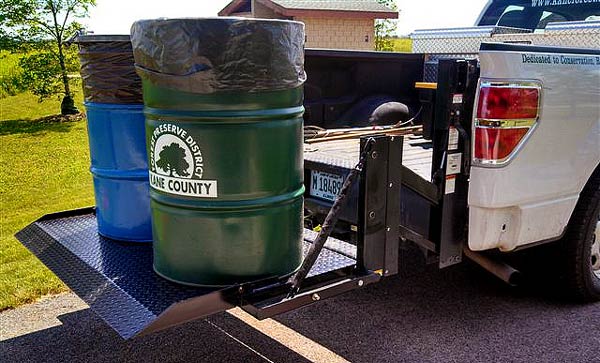
Trash Talking Pays Off
According to estimates from the Environmental Protection Agency, in 2008, the last year for which data is available, each person in the United States created a daily average of 4.5 pounds of solid waste. Given the thousands of people visiting our parks and preserves, it’s no wonder that injuries (and workmen’s comp claims) so often happen when employees are performing refuse removal tasks.
PDRMA’s Injury Prevention Program (PIPP) helps members maintain safe work practices and avoid workers’ compensation claims with its Refuse Collection Job Task Training guide, which combines ergonomics solutions and training reinforcement. Over the past 10 years, PDRMA members have experienced more than $500,000 in worker’s compensation claims related to refuse removal activities.
Still, for park districts with vast acreage, staying on top of refuse can be a challenge.
The Forest Preserve District of Kane County offers 93 natural preserves spread over nearly 20,000 acres, with some 200 miles of multi-purpose and regional trails, a nature center, campgrounds, and picnic areas. Year round, tens of thousands of visitors enjoy the natural beauty of their surroundings while doing virtually every outdoor recreation imaginable, from bird watching, camping and fishing to snowboarding and horseback riding.
To handle the trash, the park district scattered 79 large trash cans throughout the preserves. Employees had to travel between 20 and 30 minutes to get to a site from the North and South maintenance facilities, and had to spend even more time checking and emptying each heavy, 50-gallon can — all the while worrying about hazardous trash (i.e. syringes and needles, broken glass, etc.) that visitors left behind.
How do you manage trash removal more safely and efficiently? Sometimes a solution can be found by thinking outside of the box…or in Kane County’s case, by thinking outside of…the can.
“We decided to remove almost all the cans and replace them with 24 dumpsters in strategic areas,” Director of Operations John Goreth says. “We factored in the travel time to the locations, employee safety concerns about hazards in the cans, and the weight of the cans themselves. Staff's input in making these decisions was essential. They are the front line employees in contact with refuse removal throughout the entire forest preserve district,” he adds.
This kind of ‘trash talk’ was a win-win for workers, the preserve, and the environment. The dumpsters, placed in the heaviest used and most popular preserves, are where staff recognized the most refuse being collected.
The waste company provided the dumpsters and delivered them to the various sites for free; the forest preserve is charged only when the dumpsters are full and the waste company is called to empty them. “Before, we sent our staff out to check the cans every day and unload them every day or so. We have saved money and been far more productive due to fewer worker’s comp claims, and this protects our staff from handling potentially harmful material — and we save so much time that we can now use for other park and preserve maintenance, along with saving on energy costs from the long drives to check all the receptacles.” Bottom line; fewer cans, less employee exposure to the hazards associated with refuse removal.
The reduced number of cans encouraged the public to be more self-policing about litter, Goreth says, but they do get reminders. “We have a use ordinance against littering on forest preserve property,” Goreth explains. “And it's posted at each site on an informational kiosk. Each district preserve is personally checked daily by operations staff; staff also asks if the group at a rented preserve needs extra garbage bags, and there is an ongoing presence by operations staff and law enforcement.”
The only trash cans left are at parking lots in outlying locations that are not used as often as other locations or at picnic shelters reserved by the public. Even then, Goreth notes, crews handling these cans have help from automatic tailgate lifts installed on three of the preserve’s maintenance pickup trucks. “It’s a hydraulic lift that allows the crews to slide the cans onto it for lifting instead of lifting the cans themselves. PDRMA provided the training and discounted equipment purchases so our staff can complete their tasks safely and efficiently.”
This combination of solutions earned the Forest Preserve of Kane County PDRMA’s Loss Control Review (LCR) award for the highest score by a new member in 2011. But there’s a more personal reward for Goreth. “The district’s good performance on the LCR is a reflection of our dedication to the safety of our employees and the public,” he says. And those are the people who work in — and enjoy — the forest preserve 365 days a year.
PDRMA Resources
|

